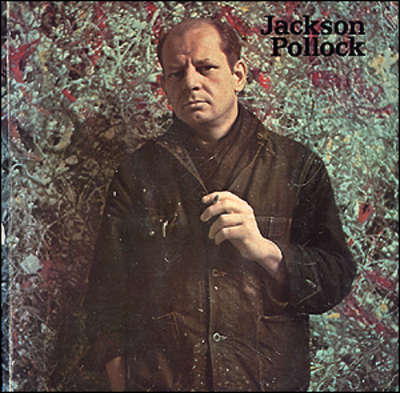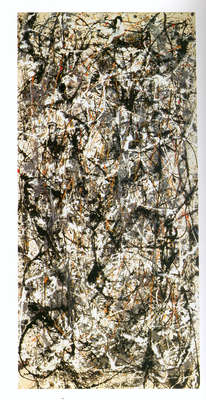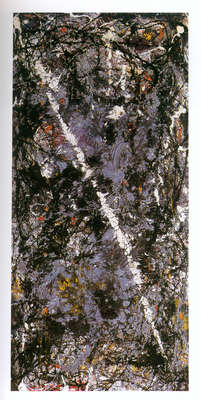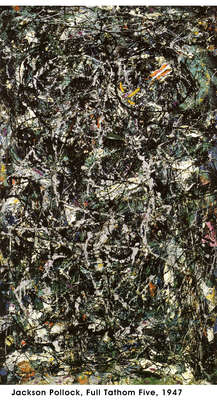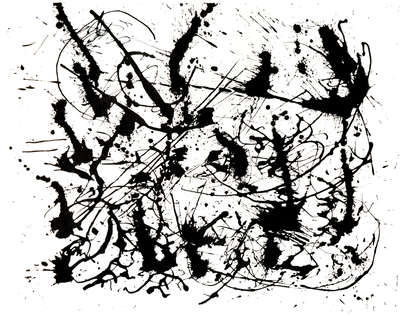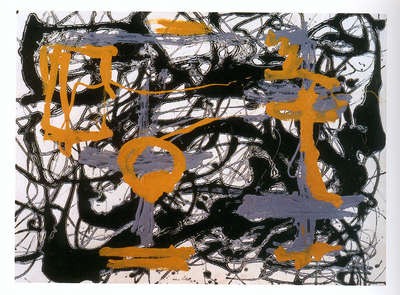Paul Jackson Pollock was born as the youngest child of LeRoy McCoy Pollock and Stella McClure Pollock, in 1912. Four elder brothers made up the rest of his family. Though born in Cody, Wyoming; Pollock was brought up in California and Arizona. After a period of study at the Manual Arts High School located in Los Angeles, Pollock joined his brother Charles to study at the Art Students League with him under American muralist and painter – Thomas Hart Benton. Benton had a lasting influence on the abstract art output of Pollock. The art techniques of David Alfaro Siquieros, José Clemente Orozco – a Mexican muralist and El Greco – a Spanish painter, also greatly influenced Pollock.
Between 1935 and 1942, Pollock was involved in the Federal Art Project. The late 1930’s saw him seeking help for alcoholic depression. Pollock’s companionship with a rich New York heiress by the name of Peggy Guggenheim helped him earn public recognition. In fact, it was Peggy who gave Pollock his first ever solo exhibition in 1943 at the Art of This Century Gallery in New York.
In the early 1940’s, Pollock contributed paintings for display at several abstract art and Surrealist exhibitions including ‘Abstract and Surrealist Art’, ‘Surrealist Art’, ‘Insane’ and ‘Natural’.
Halfway though the 1940’s, Pollock was painting in an absolutely abstract art style. In 1947 emerged the ‘drip and splash style’. The origin for the phrase ‘action painting’ is believed to have originated partly from this unique style of Pollock’s. Pollock didn’t go for the traditional easel and preferred instead to drip and pour paint from a can onto an un-stretched primed canvas fixed on the wall or floor. In Pollock’s own words, he preferred “sticks, trowels, knives and dripping fluid paint or a heavy impasto with sand, broken glass or other foreign matter added” to produce a work of art on the cotton duck canvas. The ‘All-over’ painting style was introduced by Pollock, which departs from the conventional concept of composition with respect to the relations amid the parts.
In 1945 Pollock married Lee Krasner, an influential painter of the Abstract Expressionism Movement. The month after their wedding the couple moved to the wood-frame house – known now as the Pollock-Krasner House and Study Center – where they resided till their deaths. The down payment for this house was lent to Pollock by Guggenheim. Pollock’s ‘drip period’ (1947-1950) was followed by paintings of a darker colour. However, Pollock soon returned to colour and reintroduced figurative aspects in his absract art. The pressure caused by a great demand for his new paintings made Pollock start drinking again after some years of abstention.
Pollock started numbering his abstract art paintings instead of naming them with the intention of ending the viewer’s hunt for representational interpration of his works. In 1955 Pollock ceaseed to paint and his marriage was on the rocks. An alcohol connected car crash in 1956, very near to Pollock’s home, caused his death at the age of 44.
source: http://www.buzzle.com/articles/the-canvas-art-of-jackson-pollock.html (16/07/09)


